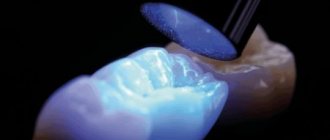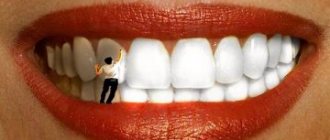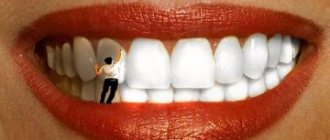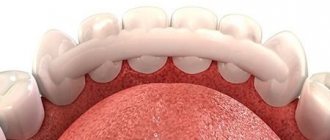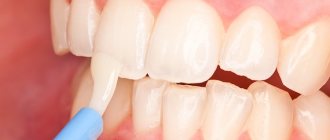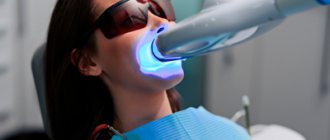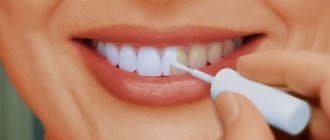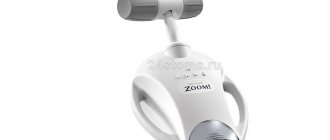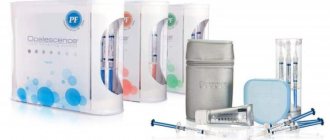Teeth are composed of minerals that provide high strength and prevent premature wear. But due to insufficient oral hygiene or pathological processes, they are affected by caries, which requires mandatory treatment by a dentist. The doctor carries out actions to eliminate the problem in several stages. The final step is filling. Dentistry in Kyiv successfully copes with this task. Doctors have a variety of materials in their arsenal that allow them to restore the entire structure of the tooth.
Requirements for fillings
Filling teeth protects them from infection, restores functionality, and improves aesthetic appearance. The result of treatment largely depends on the choice of filling material. It must meet the following requirements:
- do not pose a health hazard;
- be durable and wear-resistant;
- have good tightness;
- Match the color to the natural shade of the teeth.
Before the procedure, you should consult with your dentist. Modern technologies and materials make it possible to select a tooth filling as accurately as possible, taking into account its shade, texture and transparency.
What is tooth extension on a pin?
A pin is a small rod whose purpose is to strengthen the entire structure. It is installed in the root canal.
Tooth extension onto a pin may be required if:
- chipped teeth and cracks;
- enamel damage;
- violation of the integrity of the tooth as a result of trauma;
- loss of part of the tooth surface as a result of caries.
The most commonly used pins are:
- anchor - made from high-strength materials, they allow you to restore even the most severe damage. An important condition for their installation is healthy root canals;
- fiberglass - hypoallergenic and safe. Their main advantages are that they are easy to install, not subject to discoloration and corrosion;
- titanium - used when it is necessary to restore large damage.
The design of the pin is selected depending on the degree of destruction, as well as in accordance with the wishes and financial capabilities of the patient.
Classification of fillings
According to purpose, filling material is divided into 2 groups.
Temporary fillings
The name of the species speaks for itself. Such fillings are also called diagnostic fillings. They are designed to temporarily eliminate a defect, therefore they are characterized by low strength and short service life.
The temporary filling can be easily removed if necessary. The dentist uses it to close a carious cavity when the tooth is very deeply affected, as well as when it is necessary to remove the pulp. When all the risks have passed and the doctor is convinced that everything is fine, the temporary filling is replaced with a permanent one. This filling is performed using one of the materials:
- aqueous dentin – powder, liquid;
- special cements, for example, zinc phosphate;
- dentin paste – powder, oil;
- polymers are special light-curing materials.
Temporary fillings are often used to diagnose a disease, or when there is a need for long-term treatment. For example, if a doctor cleans canals, he uses temporary material. If there is no pain or swelling, it is replaced after a few days.
Such fillings are placed to isolate the tooth cavity or fix the arsenic mass before extracting the nerve. The doctor leaves them for different periods - from 1 day to 2-3 weeks. The material hardens immediately, but since it is fragile, it is better to eat an hour or two after the procedure.
Light-curing composites
These seals require the use of special adhesives that can firmly strengthen the seal. Such materials include a number of polymers and special fillers that harden under the influence of a special lamp. A very wide palette of shades allows you to choose a filling that will not stand out against the background of healthy teeth. The average service life of the material is from 5 to 7 years.
In addition to the obvious advantages, photopolymers also have several disadvantages:
- Shrinkage is up to 5%, but can slightly reduce the quality of the filling. Due to this feature, this material is most often used to fill small tooth defects.
- Severe shrinkage can cause deformation, leading to chipping of the thin wall of the tooth.
- Hardening of the material is incomplete and reaches only 70%, which is due to the characteristics of the lamp used when installing such fillings.
Types of permanent fillings
There are many types of permanent fillings. Some of them are practically not used in dentistry today, others are being improved by scientists, which opens up new horizons in medical practice. Preference should be given to one or another material, taking into account the size and location of the tooth in the cavity. You should consult your doctor. He will tell you which fillings are best to install in a particular case.
Metal options (amalgam)
Based on metal alloys. The composition contains mercury, which has a toxic effect on the body. Because of this, they are practically not used in modern practice. Amalgam fillings also contain:
- silver – responsible for strength, has an antiseptic effect;
- tin – provides hardening;
- copper – guarantees a good fit to the tooth.
The material has anti-carious properties, good ductility and wear resistance. Only an experienced doctor can install it. The rare use of amalgam is due to its disadvantages:
- risk of allergic reactions;
- unaesthetic appearance;
- impact on the natural color of enamel;
- low level of adhesion;
- poor adhesive qualities.
Amalgams are not placed on central incisors and canines. They are contraindicated for patients who have metal structures in the oral cavity.
Cement - budget option
Cement fillings were used by dentists until medical science reached a higher level. They are a powder based on zinc oxide with impurities. The price of this material is low, it has anti-caries properties and prevents the development of secondary caries. Installing it is easy. Despite their advantages, cements are rarely used because they also have negative qualities:
- rapid darkening and erasing;
- poor fit to the walls;
- low level of adhesion;
- provoking allergic reactions;
- low strength.
Experts do not recommend using cements for filling in patients under 35 years of age. This is due to the fact that the density and hardness of the material is greater than that of dental tissue, which is why the enamel is quickly destroyed. Further, the tissue is damaged.
Reviews from patients and dentists
Dentists have different opinions about various fillings, but they agree that it is not so much the material that is important, but the quality of the installation. A cement filling installed in free dentistry can last more than twenty years, provided that the procedure is carried out competently and in compliance with all technologies. At the same time, a filling made from an expensive photopolymer, if installed incorrectly, can fall out of the tooth in just a couple of weeks. Experts advise paying attention first of all to the doctor who will perform the procedure and his level of professionalism.
Category Dental filling Posted by Mister stomatolog
Plastic options - a breakthrough in dentistry
Plastic fillings are characterized by excellent strength and long service life if installed correctly. Plastics are made from the following materials:
- Acrylic acids, which are toxic to the human body. This composition can provoke allergies in the patient. Often pores appear in it, which threatens to increase the risk of secondary caries. These dental fillings quickly darken due to smoking and drinking drinks containing dyes. Acrylic acids negatively affect the pulp and often provoke the occurrence of pulpitis.
- Epoxy resin. Its toxicity is much lower. Fillings of this type are installed on chewing teeth, because they darken over time. Resin is not suitable for restoration of the frontal group due to its fragility.
The cost of plastic fillings is reasonable. They are easy to match to the tooth color because they come in many shades.
The cost of plastic fillings is reasonable. They are easy to match to the tooth color because they come in many shades.
Composite Curable Types
Chemical composites contain an organic matrix (approximately 70%) and inorganic particles (at least 30%). The seal consists of a main part and a catalyst. Its advantages:
- high strength;
- uniform curing;
- inertness to saliva;
- excellent wear resistance.
Composites harden in a matter of seconds, so the doctor’s actions must be as fast as possible. Only a good specialist can deliver them efficiently. In addition to restoration work, the material is also used to fix mobile teeth with periodontitis.
Zirconium dioxide
If tooth decay is more than 30%, then you should turn your attention to one of the new methods of microprosthetics - zirconium inlays. Such inlays will provide an excellent aesthetic appearance of the structure, as well as high strength, not inferior to metals. Pros:
- The most natural appearance, providing a magnificent aesthetic effect.
- Over time they do not darken or stain, which indicates good performance.
- Minimal risk of allergies.
- Can be used on front teeth. The zirconium inlay is not translucent and does not impart a blue tint to the future tooth.
- High wear resistance.
There is only one disadvantage - high cost.
Zirconium inlays are prescribed:
- With a completely destroyed tooth;
- For defects in the shape or location of teeth;
- As a support for bridge structures.
Photopolymer – light-curing materials
Photopolymer filling is considered the highest quality. Lighting composites represent the latest generation of materials that provide excellent results. They are produced in the form of a paste that hardens under the influence of UV radiation from a special lamp. They are applied in layers (about 2 mm), which makes it possible to form the shape of the tooth as accurately as possible. Other advantages of the material:
- a wide selection of shades - allows you to choose the desired color, which makes the filling invisible to others;
- strength;
- application for restoration of anterior and lateral teeth;
- low toxicity;
- the highest aesthetic properties compared to other materials;
- slight shrinkage.
A photopolymer filling has virtually no disadvantages. If the restoration technology is followed, it will last for many years. The only negative is the higher price when compared with plastic and cement materials. But the expenses are justified, because the patient receives high quality. Today, dental clinics often work with photopolymers.
Composite
Perhaps, for a budget option, these dental fillings will be the best in terms of price and quality. This material contains plastic, but the high hardness of the filling is ensured due to the fact that they contain quartz powder. In addition, they are characterized by excellent color fastness and durability. They serve on average about five years.
For the front teeth, light-hardening fillings are used; for the back teeth, universal fillings are used.
Price
Patients often choose one filling or another based on the cost of the filling material. And many people mistakenly believe that a good filling is expensive. This is not true, as there are a number of factors that determine the final cost of treatment. If you want to get a little guidance on prices, here are some approximate data:
- The cost of tabs ranges from 3 to 14 thousand rubles.
- Compomers will cost you 600-1000 rubles.
- The price of chemically cured composites is 650-800 rubles.
When choosing a filling, you must listen to your dentist, who, after assessing the situation, will help you choose the most suitable option. Otherwise, the need for a filling may return after a short time, and as a result you will spend much more than if you initially installed a quality filling.
Watch thematic video
Amalgam black
The main, durable and proven material is amalgam . It is mercury mixed with silver, tin and copper. It is used to fill the inside of teeth. Amalgam fillers are quite hard, relatively inexpensive and durable. They have antimicrobial properties, which means that they fight against the growth of bacteria and thus prevent tooth decay. For most interior applications where aesthetics are not a primary concern, they are a good choice.
The disadvantage of amalgam is its color. Classic amalgam has no chemical bond with the tooth.


